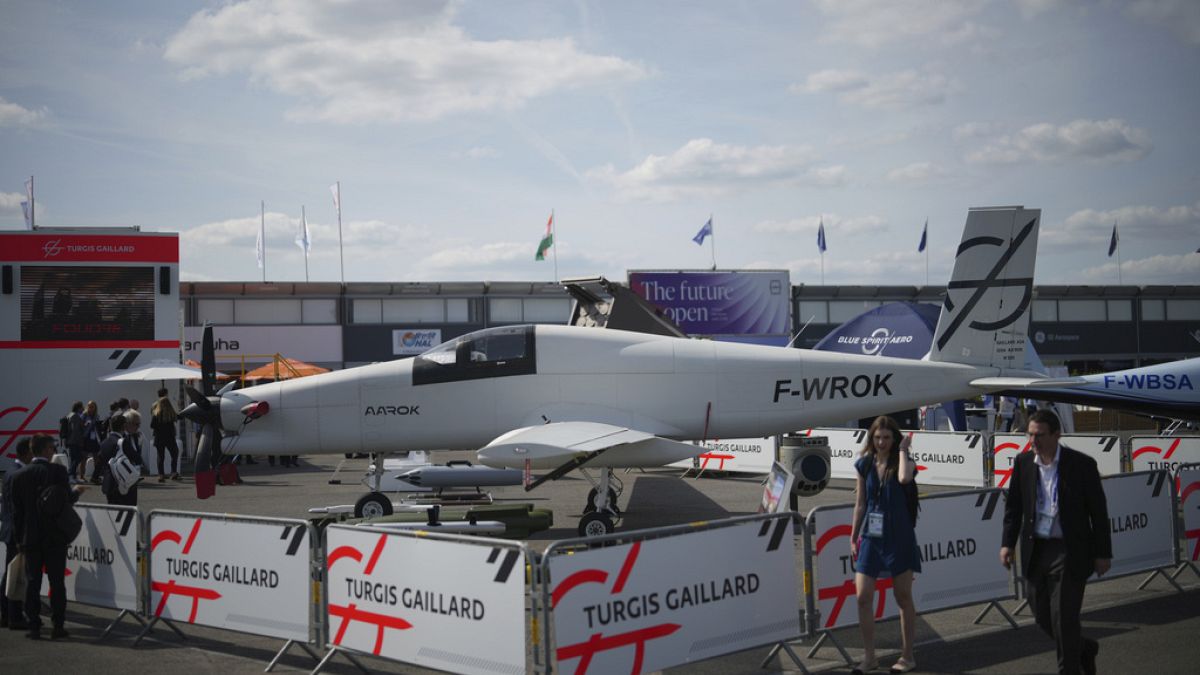At this year’s Paris Air Show, fighter jets are taking a backseat. Unmanned and autonomous technologies are driving the future of defence and dominating the conversation at Le Bourget airport in northern Paris.
With 2,400 exhibitors from 48 countries and 300,000 visitors expected, the world’s biggest aerospace event opened against an intense backdrop of global tensions.
As Russia’s full-scale invasion of Ukraine enters its fourth year and tensions are soaring between Israel and Iran, it has become urgent for Europe to modernise its defence capabilities.
On Monday, Italian giant Leonardo and Turkey’s Baykar Technologies announced a joint venture to co-develop a new generation of unmanned systems, with the first drones expected to be delivered in 2026.
“When it comes to unmanned systems, Europe is quite behind,” said Leonardo CEO Roberto Cingolani.
“First of all, I think the target is to fill the gap… We need to develop different platforms with different payloads… and offer them to different countries. That will already be a very important target in the short to mid-term,” explained Cingolani to a group of reporters.
Cingolani stressed that Europe will soon need not just drones, but also land and sea-based systems. “The Ukrainian war has completely changed the landscape,” he said. “We know that we have to be ready.”
For defence consultant Xavier Tytelman, the turning point for this edition of the fair is the industrialisation of high-intensity warfare.
“In the past, we said ‘We are going to make drones’. Now, we are actually offering drones with well-defined prices, which shows a very strong trend of military industrialisation,” he told Euronews.
Europe’s previous lag on large drone platforms may no longer matter. Smaller, more agile systems that are cheaper to produce and easier to deploy are now proving decisive on the battlefield.
Beyond strategy and scale, sovereignty has become a defining theme aduringt this year’s edition.
The push to develop “ITAR-free” (International Traffic in Arms Regulations) equipment -free from U.S. export restrictions – is visible across the exhibition area.
“There’s one fundamental element here, and that’s the return of sovereignty. You see it everywhere with many booths labelled ‘ITAR Free.’ That means there are no American components, so the U.S. can’t prevent them from using their own equipment, like they did in Ukraine, where we supplied missiles that couldn’t be used because they contained U.S. parts,” explained Tytelman.
“Now, all around us, Europeans are organising themselves to be more sovereign, independent, to work together, to complement each other’s technological capabilities, and to achieve 100% European industrialisation. That’s another major deep, structural trend.”
